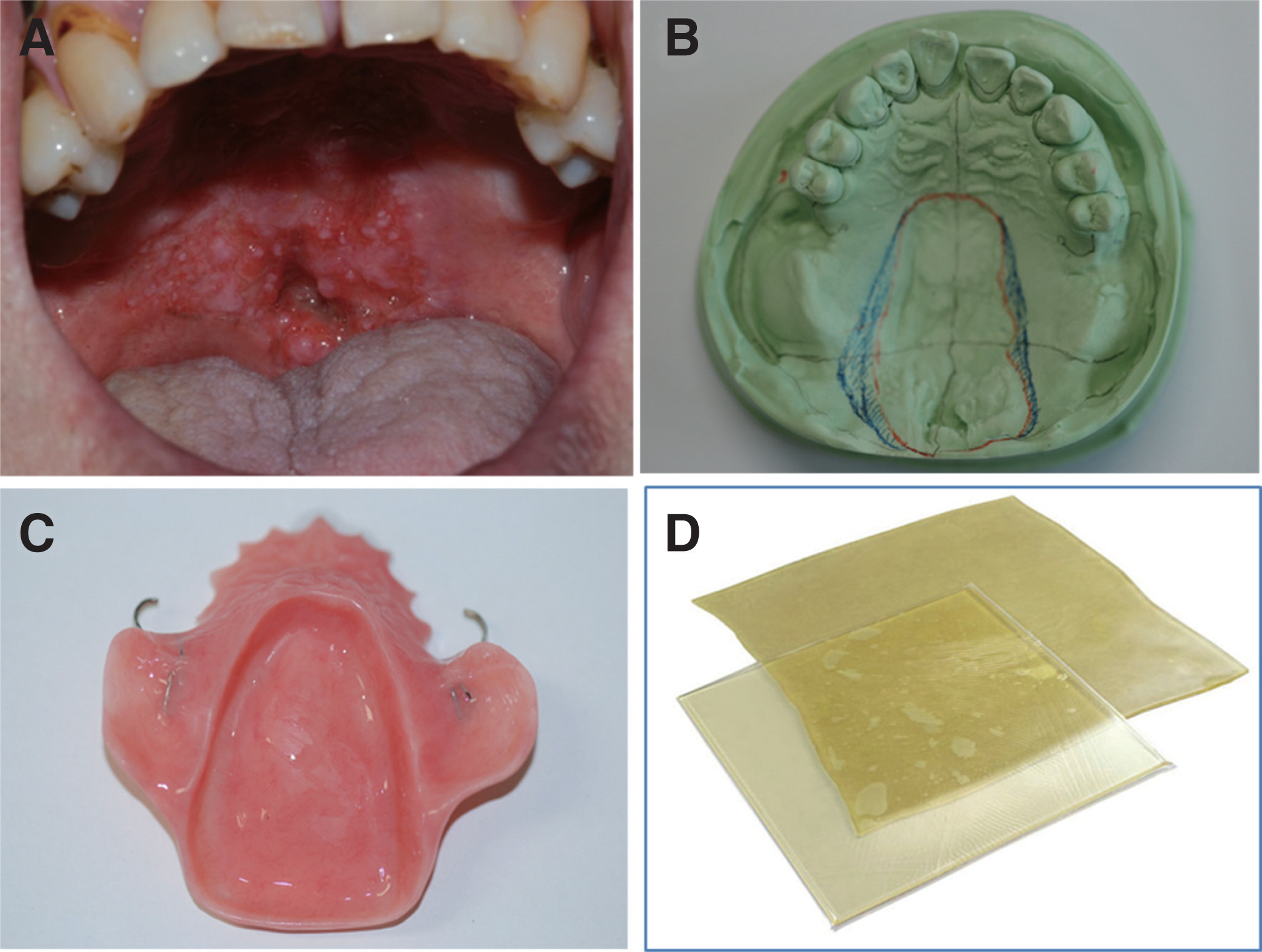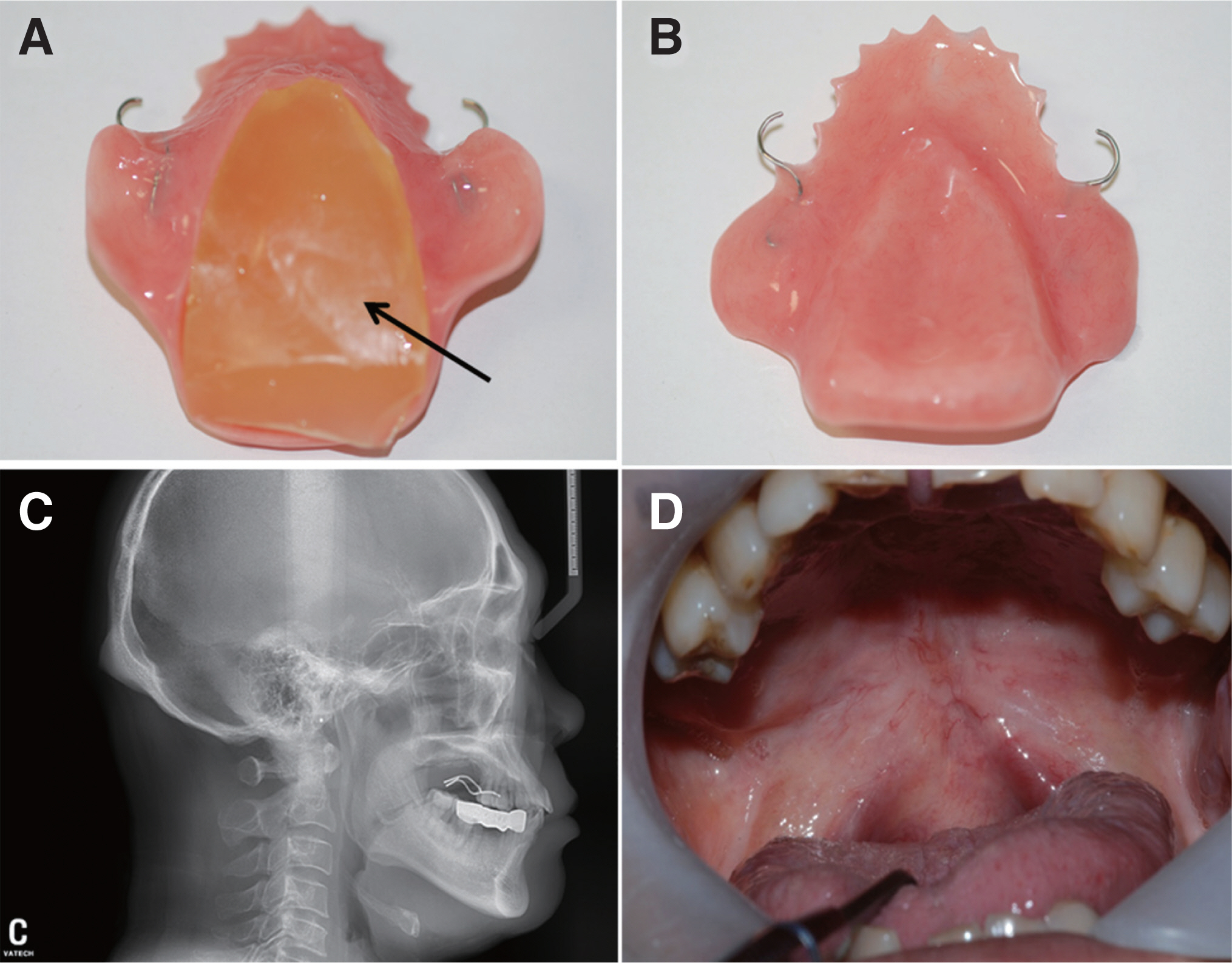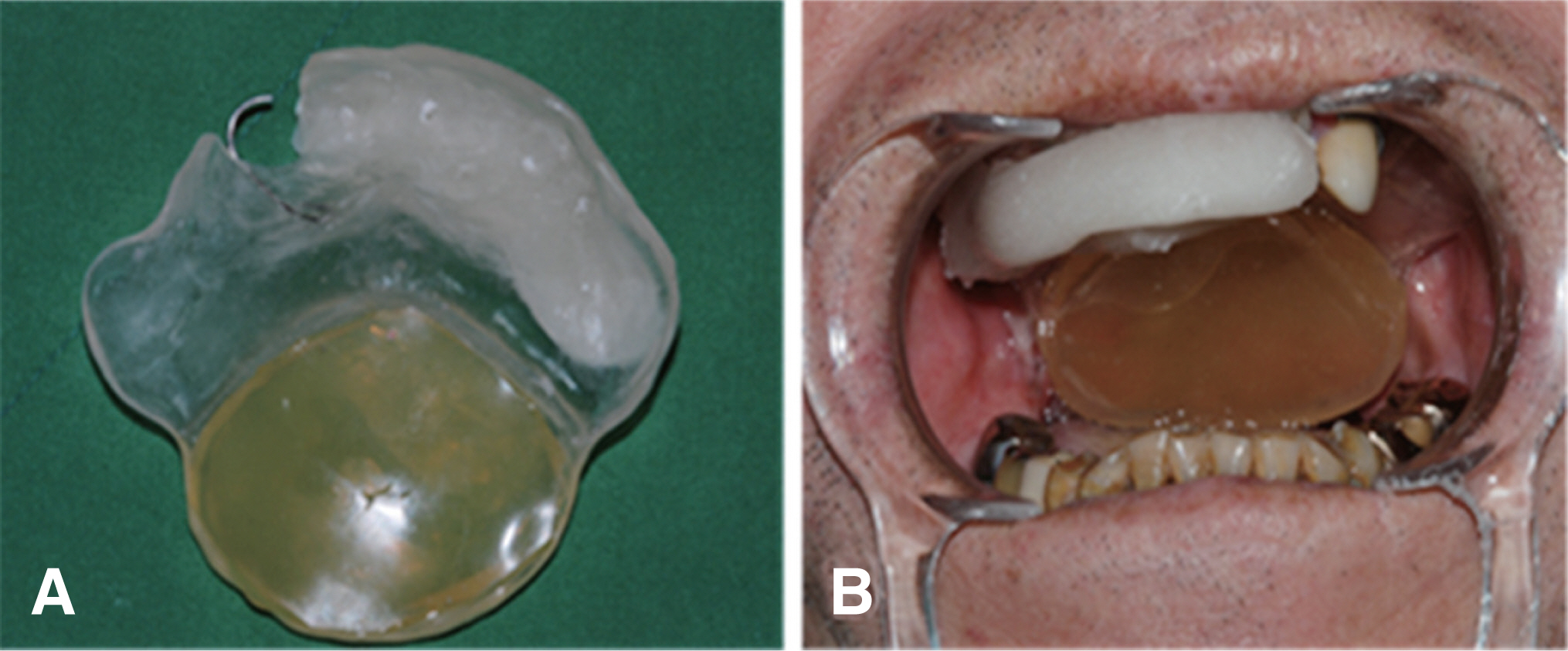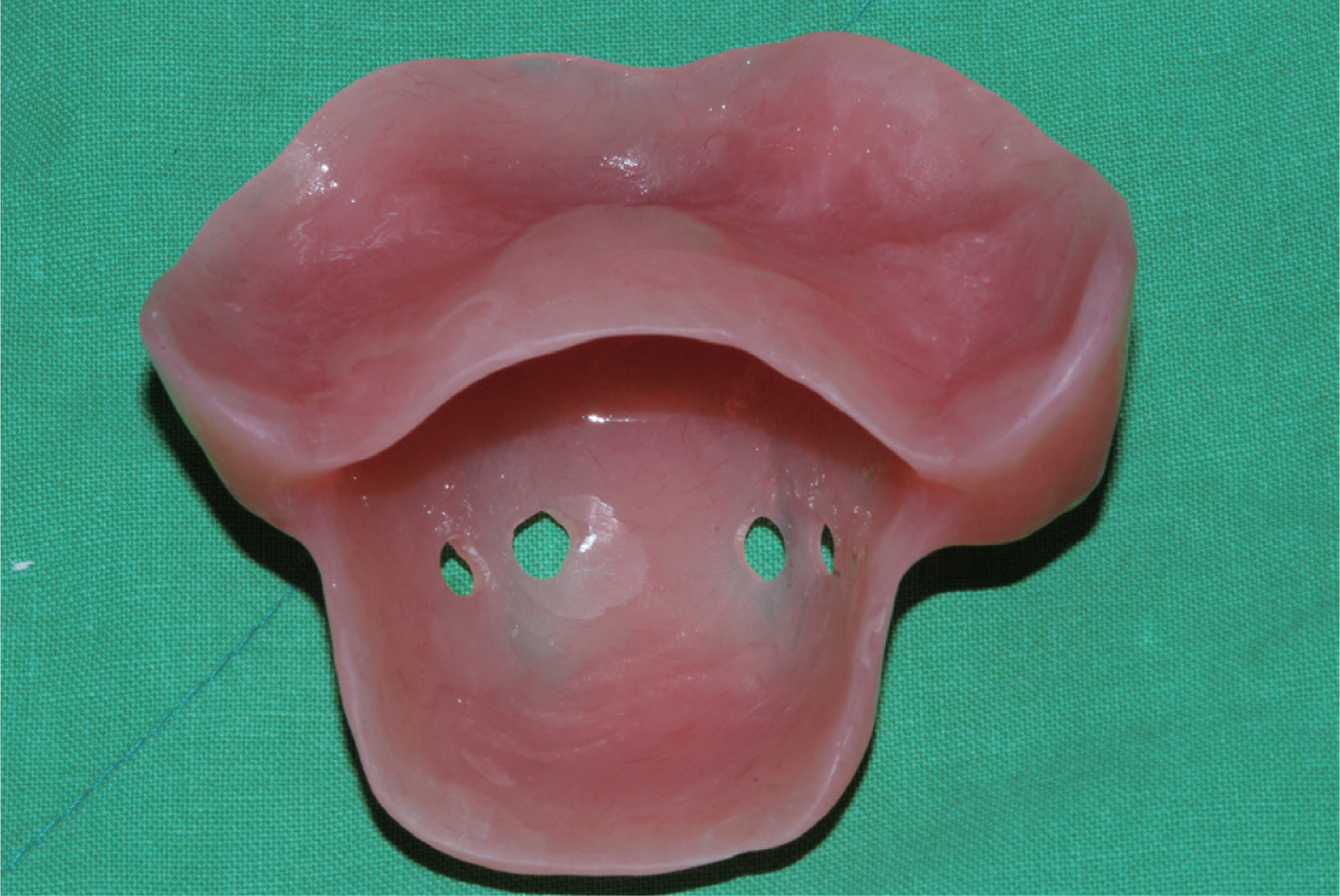J Dent Rehabil Appl Sci.
2020 Dec;36(4):282-288. 10.14368/jdras.2020.36.4.282.
Radiation prosthetic stents applied to oral cancer patients during the radiation therapy: case reports
- Affiliations
-
- 1Department of Dentistry, College of Medicine, Keimyung University, Daegu, Republic of Korea
- KMID: 2512123
- DOI: http://doi.org/10.14368/jdras.2020.36.4.282
Abstract
- Radiation prosthetic stent is defined as the customized oral devices which serve for an efficient administration of radiation dose to the affected areas or a minimizing the unnecessary irradiation to surrounding normal tissues during maxillofacial cancer radiotherapy. Since the use of stents is individualized, a close collaboration among radiotherapist, surgeon and prosthodontist is essential thereby which helps in limiting the post-therapy morbidity as well as the stable oral rehabilitation. In this report, two customized stents (bolus carrier and tongue depressing) were fabricated and applied to patient undergone irradiation for soft palate and tongue carcinoma selectively. Multidisciplinary approach can be a proper strategy and recommended for control the sequel of post-irradiation.
Figure
Reference
-
References
1. Lee VSK, Nguyen CT, Wu J. 2019; The Fabrication of an acrylic repositioning stent for use during intensity modulated radiation therapy: a feasibility study. J Prosthodont. 28:643–8. DOI: 10.1111/jopr.13074. PMID: 31090980.2. Purdy JA. 2008; Dose to normal tissues outside the radiation therapy patient's treated volume: a review of different radiation therapy techniques. Health Phys. 95:666–76. DOI: 10.1097/01.HP.0000326342.47348.06. PMID: 18849701.3. McCarthy D, Omer O, Nunn J, Cotter E. 2005; Oral health needs of the head and neck radiotherapy patients: 1. epidemiology, effects of radiotherapy and role of the GDP in diagnosis. Dent update. 32:512–22. DOI: 10.12968/denu.2005.32.9.512. PMID: 16317884.4. Seo JG, Cho JH. 2018; Prosthetic rehabilitation for patient with hemi-maxillectomy: Obturator combined with a hybrid telescopic double crown using friction pin. J Dent Rehabil Appl Sci. 34:317–23. DOI: 10.14368/jdras.2018.34.4.317.5. Kaanders JH, Fleming TJ, Ang KK, Maor MH, Peters LJ. 1992; Devices valuable in head and neck radiotherapy. Int J Radiat Once Biol Phys. 23:639–45. DOI: 10.1016/0360-3016(92)90023-B. PMID: 1612965.6. Munshi A. 2014; Radiation oncology: Colors and hues. South Asian J Cancer. 3:16–7. DOI: 10.4103/2278-330X.126505. PMID: 24665440. PMCID: PMC3961861.7. Aggarwal H, Kumar P. 2014; Radiation stents: minimizing radiation-induced complications. South Asian J Cancer. 3:185. DOI: 10.4103/2278-330X.136812. PMID: 25136529. PMCID: PMC4134613.8. Wesson RA, Garden AS, Chambers MS. 2017; Fabrication of an unconventional bolus-type stent for a combined intraoral/extraoral defect treated with proton radiation therapy. J Prosthet Dent. 117:563–5. DOI: 10.1016/j.prosdent.2016.07.032. PMID: 27881320.9. Mantri SS, Bhasin AS. 2010; Preventive Prosthodontics for Head and Neck Radiotherapy. J Clin Diagn Res. 4:2958–62.10. Brosky ME, Lee C, Barlett TS, Lo S. 2000; Fabrication of radiation bolus prosthesis for the maxillectomy patient. J Prosthet Dent. 83:119–21. DOI: 10.1016/S0022-3913(00)70097-7.11. Kim SW, Shin HJ, Kay CS, Son SH. 2014; A customized bolus produced using a 3-dimensional printer for radiotherapy. PLoS One. 9:e110746. DOI: 10.1371/journal.pone.0110746. PMID: 25337700. PMCID: PMC4206462.12. Tryggestad E, Christian M, Ford E, Kut C, Le Y, Sanguineti G, Song DY, Kleinberg L. 2011; Inter- and intrafraction patient positioning uncertainties for intracranial radiotherapy: a study of four frameless, thermoplastic mask-based immobilization strategies using daily cone-beam CT. Int J Radiat Oncol Biol Phys. 80:281–90. DOI: 10.1016/j.ijrobp.2010.06.022. PMID: 20951506.13. van Santvoort J, Wiggenraad R, Bos P. 2008; Positioning accuracy in stereotactic radiotherapy using a mask system with added vacuum mouth piece and stereoscopic X-ray positioning. Int J Radiat Oncol Biol Phys. 72:261–7. DOI: 10.1016/j.ijrobp.2008.05.006. PMID: 18722276.14. Ikawa H, Koto M, Ebner DK, Takagi R, Hayashi K, Tsuji H, Kamada T. 2018; A custom-made mouthpiece incorporating tongue depressors and elevators to reduce radiation-induced tongue mucositis during carbon-ion radiation therapy for head and neck cancer. Pract Radiat Oncol. 8:e27–31. DOI: 10.1016/j.prro.2017.10.009. PMID: 29291964.
- Full Text Links
- Actions
-
Cited
- CITED
-
- Close
- Share
- Similar articles
-
- Radiation-induced angiosarcoma (RIAS) of the maxilla: a case report
- Role of Radiation Therapy for Non-small Cell Lung Cancer: Focused on Stereotactic Ablative Radiation Therapy in Stage I
- Radiation protection in dental clinic
- Less is more: level IB-sparing radiation therapy in nasopharyngeal cancer
- The Effect of Nutritional Support with Oral High Protein Liquid on Patients Who are Undergoing Radiotherapy for Lung Cancer






